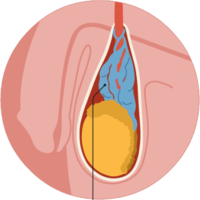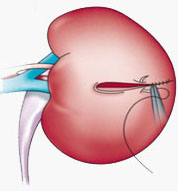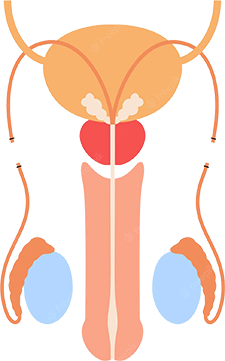
laparoscopy and laser Centre

laparoscopy and laser Centre
Urology is a part of health care that deals with diseases of the male and female urinary tract. It also deals with the male organs that are able to make babies (penis, testes, scrotum, prostate, etc.). Since health problems in these body parts can happen to everyone, urologic health is important.
Urology is a surgical speciality that deals with the treatment of conditions involving the male and female urinary tract and the male reproductive organs.
LAPSER is a centre with best urologist in chennai. We have listed some of the most common treatments provided at e below. Book an appointment for a consultation of your urology problem today.





Circumcision is the surgical removal of the skin covering the tip of the penis.

Before circumcision, the doctor will explain the risks, benefits & methods of the circumcision.This procedure are done under local /spinal / general anaesthesia hence pain free.
| Attributes | Conventional / open | Laser | Stapler |
|---|---|---|---|
| Operative time | 45 mins | 25 mins | 15 mins |
| Tissue injury | Moderate | Minimal | Minimal |
| Blood loss | Moderate | No | No |
| Recovery time | 7-10 days | 3 days | 1 days |
| Pain | Moderate | Painless | Painless |
| Post-operative complication | More | Few | Few |
| Scar | Yes (stitch mark) | Minimal scar | No scar |
| Cosmetic appeal | Good | Better | Best('high & tight' look) |
| Cost | Low | High | Highest |
A hydrocele is a swelling in the scrotum that occurs when fluid collects in between the thin sheath surrounding testicle. Hydrocele is common in newborns and usually disappears without treatment by age 1. Older boys and adult men can develop a hydrocele due to inflammation or injury to the scrotum.
A hydrocele usually isn't painful or harmful but may need treatment .If you have scrotal swelling, see your doctor to rule out other causes.

Usually, the only indication of a hydrocele is a painless swelling of one or both testicles.
Adult men with a hydrocele might experience discomfort from the heaviness of a swollen scrotum. Pain generally increases due to size & inflammation.
If gets infected or traumatised can leads to serious complications.
Treatment
Males of any age, it's important for a doctor to evaluate a hydrocele because it can be associated with an underlying testicular condition.
The surgery to remove a hydrocele (hydrocelectomy) can be done under general or regional anesthesia. An incision is made in the scrotum or lower abdomen to remove the hydrocele. If a hydrocele is found during surgery to repair an inguinal hernia, the surgeon might remove the hydrocele even if it's causing no discomfort.
After hydrocelectomy, you might need a tube to drain fluid and a bulky dressing for a few days. Your doctor is likely to recommend a follow-up exam because a hydrocele might recur.
See your doctor if you experience a scrotal swelling. It's important to rule out other causes of the swelling that might require treatment.
A varicocele is an enlargement of the veins within the loose bag of skin that holds the testicles (scrotum). Blood pools in the veins rather than circulating efficiently out of the scrotum.
A varicocele usually occurs on the left side of the scrotum and often produces no signs or symptoms. Possible signs and symptoms may include:

Proper clinical examination and Ultrasonogram of scrotum-venous Doppler.
A varicocele often doesn't need to be treated. For a man experiencing infertility, surgery to correct the varicocele may be a part of the fertility treatment plan. Surgery might be recommended in the following situations:
Pain and discomfort during erection, due to Restricted range of motion between glances and foreskin. Frenuloplasty helps in relieving the restriction and tightness caused by a frenulum.

Total recovery period after this surgery is around 10 to 15 days. During this period, the patients must take some preventive measures, such as avoiding interscopes and strenuous activities.
A vasectomy (male sterilisation) is a surgical procedure to cut and seal the tubes that carry a man's sperm to permanently prevent pregnancy. It's usually carried out under local anaesthetic, where you're awake but don't feel any pain, and takes about 15 minutes.
